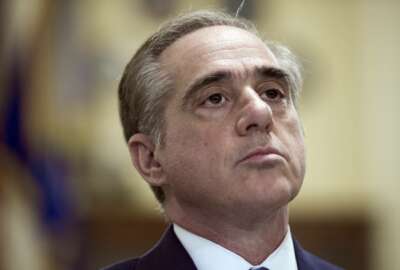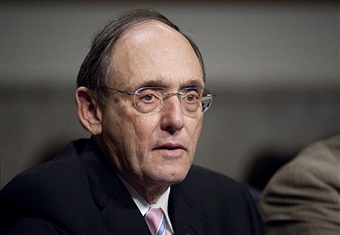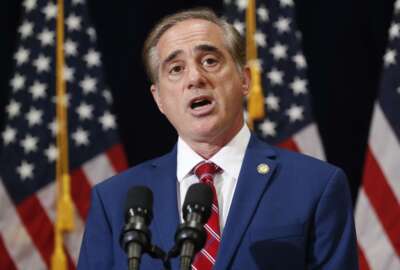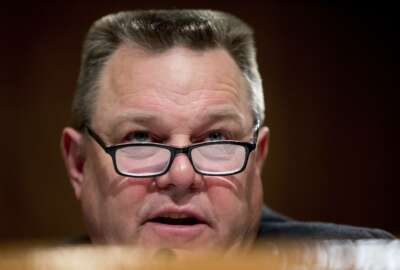
On tight deadlines, House couples Veterans Choice funding extension with potential CR
The House has included an additional $2.1 billion for the Veterans Choice Program in a continuing resolution, which would extend funding for civilian agencies...
The likely future of the Veterans Choice Program will face the same fate as a government spending bill — at least for now.
After months of debate, members in the House and Senate still have two different approaches to overhauling the Veterans Choice Program, and there’s little agreement on how to pay for it.
But tight deadlines — both for the Veterans Affairs Department and for government spending at large — are forcing House and Senate VA committees to pass yet another quick fix and revisit the issue in January.
The House has included an additional $2.1 billion for the Veterans Choice Program in a continuing resolution, which would extend funding for civilian agencies through Jan. 19, 2018. The bill would also fund the Defense Department through the rest of the fiscal year.
Congress must pass a CR, or some other budget solution, by Dec. 22, when the current continuing resolution expires.
The House Rules Committee will consider the CR Tuesday afternoon. If Congress passes the continuing resolution with the Veterans Choice funding, it’ll be the third time this year that lawmakers approved last-minute funding for the program.
The Veterans Affairs Department has a tight deadline of its own.
VA Secretary David Shulkin told lawmakers on Dec. 12 that the department had three-to-five weeks of funding left for the Veterans Choice Program (VCP). As of Dec. 7, VA had about $490 million left, once it accounts for December obligations and reserve funding. The department spends anywhere from $200-400 million a month on the Choice program, Shulkin wrote in a Dec. 12 letter to Congress.
“VA could have to discontinue authorizing VCP care and transition veterans to VA or other community care programs,” Shulkin wrote. “VA’s other community care programs will not have the capacity to handle all of the patients who will transition from VCP, and the wait time for appointments at VA facilities will rise if large numbers of veterans return to VA to seek care. Taking these actions would have a number of negative consequences, including decreased access to care, damaged community partnerships and interrupted care continuity for veterans.”
Congress, armed with a legislative proposal from VA itself, has been working on this topic for much of the year. Both Republicans and Democrats have been largely working together on different versions of the Choice legislation, as both parties broadly agree on the main policy elements in the bills.
But the challenge of paying for a new VA community care program has stumped both chambers. High Congressional Budget Office scores had forced the House Veterans Affairs Committee, for example, to revisit legislation in progress.
In fact, a usually even-keeled House Veterans Affairs Committee dissolved into heated debate during Tuesday’s markup of the VA Care in the Community Act.
House VA Committee Chairman Phil Roe (R-Tenn.) negotiated with his colleagues on the legislation for months. On Tuesday, he introduced an amendment that would have capped spending on the community care program for the next four years.
Democrats adamantly argued against the caps.
“The caps that have a 3 percent growth rate each year hamstrings Congress and the VA if the need is higher,” House VA Committee Ranking Member Tim Walz (D-Minn.) said during Tuesday’s markup. “The need will be higher. I say that without any sense of wisdom or anything. I say it with a sense of history that it will be closer to 6 percent. There’s no reason to believe that care in the community will grow even faster. We honestly don’t know what our baseline in spending will need to be in this legislation because the authorizations for community care will grow.”
Roe dropped the spending caps from consideration after about 30 minutes of debate.
Still, the committee passed the VA Care in the Community Act, leaving questions over how lawmakers will fund the community care program largely unanswered.
“I am confident we’ll be able to come to a bicameral agreement to expand veterans’ options for care,” Roe wrote in a statement after his committee passed the bill. “This process will undoubtedly continue in the second session, and I hope the Democrats on this committee will return in January and negotiate in good faith to give veterans the health care they deserve.”
Leadership on the Senate VA Committee is also pushing its own bill. The Caring for Our Veterans Act eliminates the 30-day, 40-mile requirements veterans must currently meet to be eligible for community care.
The bill designates $1 billion to VA for departmental care and $3 billion for community care programs. Specifically, it authorizes the department to coordinate care plans for veterans. The bill authorizes community care if VA doesn’t offer the service or type of care the veteran needs, or if the veteran and his or her VA provider decide together that community care is the best option.
Most notably, the bill expands benefits to veterans caregivers of all eras, a move that many veterans service organizations and some lawmakers have been strongly advocating.
Walz introduced an amendment that would have essentially replaced the committee’s bill with language that practically mirrored the Senate committee’s legislation. Walz’s amendment, however, failed along party lines.
CBO gave the Senate bill an initial score of roughly $54 billion over five years.
Copyright © 2024 Federal News Network. All rights reserved. This website is not intended for users located within the European Economic Area.
Nicole Ogrysko is a reporter for Federal News Network focusing on the federal workforce and federal pay and benefits.
Follow @nogryskoWFED
Related Stories

On tight deadlines, House couples Veterans Choice funding extension with potential CR

Funding for a new veterans choice program remains the big, unresolved question for VA




